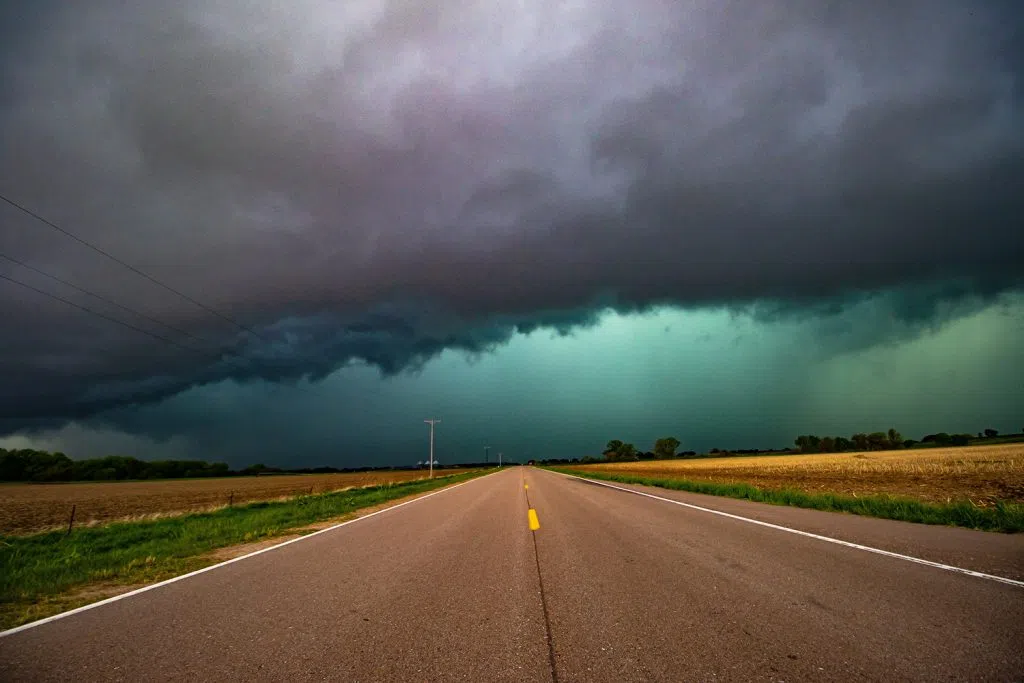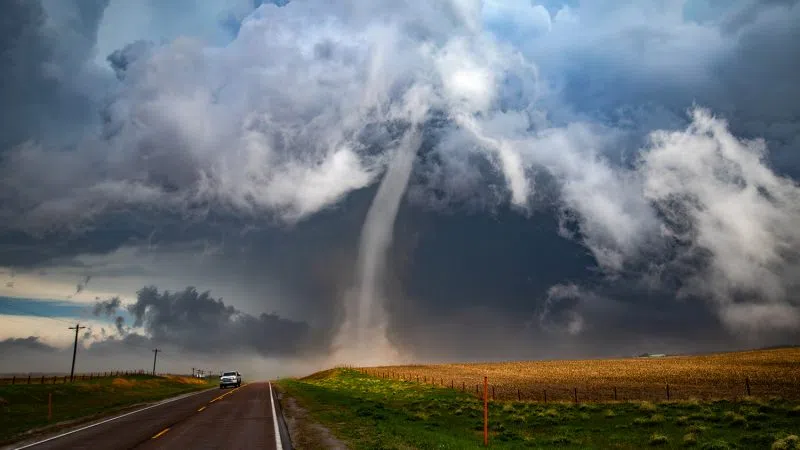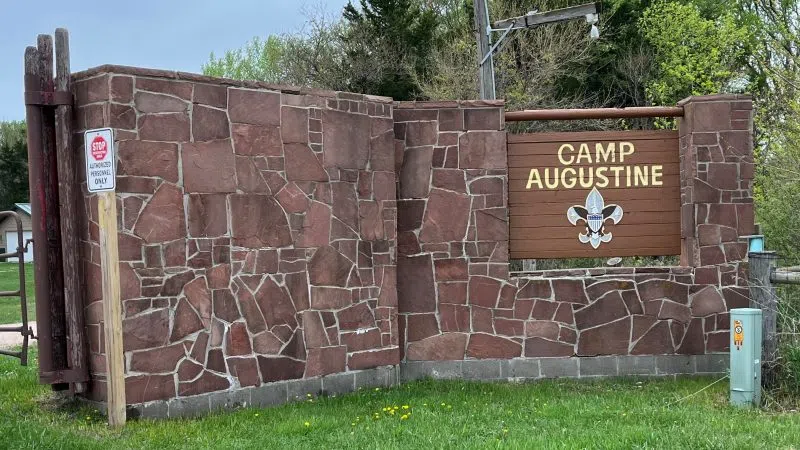
Golf ball sized hail that fell in Cozad during the early morning hours of June 29, (Heather Heinemann, Courtesy)
HASTINGS — Tornadoes may get all the headlines, but the damaging power of hail should not be underestimated, as many areas in central Nebraska learned last year.
“Hail is a form of precipitation consisting of solid ice that forms inside thunderstorm updrafts. Hail can damage aircraft, homes and cars, and can be deadly to livestock and people,” according to the National Severe Storms Laboratory, (NSSL).
Hail forms when raindrops are carried upward by thunderstorm updrafts into extremely cold areas of the atmosphere and then freeze together. Hail stones collide with the liquid water droplets and freeze onto the surface.
“If the water freezes instantaneously when colliding with the hailstone, cloudy ice will form as air bubbles will be trapped in the newly formed ice. However, if the water freezes slowly, the air bubbles can escape, and the new ice will be clear. The hail falls when the thunderstorm’s updraft can no longer support the weight of the hailstone, which can occur if the stone becomes large enough or the updraft weakens,” per the NSSL.
The process of hailstone growth is complicated.
“The conditions experienced by the hailstone can change as it passes horizontally across or near an updraft. The layers, however, do not occur simply due to the hailstone going through up and down cycles inside a thunderstorm,” the NSSL states.
“The winds inside a thunderstorm aren’t simply up and down; horizontal winds exist from either a rotating updraft, like in supercell thunderstorms, or from the surrounding environment’s horizontal winds. Hailstones also do not grow from being lofted to the top of the thunderstorm,” according to the NSSL.
At the highest altitudes, the air is cold enough, around minus 40 degrees, that all the liquid water will have frozen and hail needs liquid water to grow to an appreciable size.
Hail eventually falls to Earth when it becomes heavy enough to overcome the strength of the thunderstorm’s updraft.
“Smaller hailstones can be blown away from the updraft by horizontal winds, so larger hail typically falls closer to the updraft than smaller hail. If the winds near the surface are strong enough, hail can fall at an angle or even nearly sideways,” per the NSSL.
Wind driven hail can be especially damaging and can tear up siding on houses, break windows, blow into houses, break side windows on cars and cause serious injury or death to people and animals.
The meeting point of Nebraska, Colorado and Wyoming has been called “Hail Alley,” and averages seven to nine hail days per year.
On Saturday, June 29, 2024, golf ball sized hail caused damage in Gothenburg, and particularly extensive damage in Cozad.
Residents in Cozad reported the hail lasting for 15 minutes as the storm passed overhead. After it was over, residents left their homes to find golf ball sized hail that damaged home siding, smashed home windows and windshields of cars that had been outside.
Fields of crops were flattened across the area. Those that were not impacted on June 29 were flattened by another hail storm on July 6.
The largest hailstone recovered in the United States fell near Vivian, S.D., on June 23, 2010. It had a diameter of eight inches, a circumference of 18.62 inches and weighed one pound and 15 ounces.
Most hailstorms are made up of a mix of different sizes, and only the very largest hail stones pose serious risk to people caught in the open.
When reporting hail, estimates comparing the hail to a known object with definite size are good, but measurements using a ruler, calipers, or a tape measure are best.
Storms producing hail one inch or greater are considered severe.
“There is no clear distinction between storms that do and do not produce hailstones. Nearly all severe thunderstorms probably produce hail aloft, though it may melt before reaching the ground,” per the NSSL.
Multi-cell thunderstorms produce many hailstones, but they are not usually very large. In the life cycle of the multi-cell thunderstorm, the mature stage is relatively short so there is not much time for hailstones to grow.
In contrast, supercell thunderstorms have sustained updrafts that support large hail formation by repeatedly lifting the hailstones into the very cold air at the top of the thunderstorm cloud where they can accumulate more layers of ice. In general, hail two inches or larger in diameter is associated with supercells.
It has often been reported that the sky appears green during some hailstorms. This is thought to be due to the fact that the large amounts of water and ice suspended aloft scatter green light and make the clouds appear either green or various shades of blue.
“There have been a handful of hailstorms that resulted in $1 billion or more in damages in the U.S. The costliest storm appears to be that of April 10, 2001, which cut a swath along the I-70 corridor from eastern Kansas to southwestern Illinois and pounded the St. Louis area. Property damage was in excess of $2.5 billion in 2018 dollars,” per Weather Underground’s website.

The greenish hue of a hail core approaches the Riverton area during the afternoon of Monday, May 6, (Brian Neben, Central Nebraska Today)









